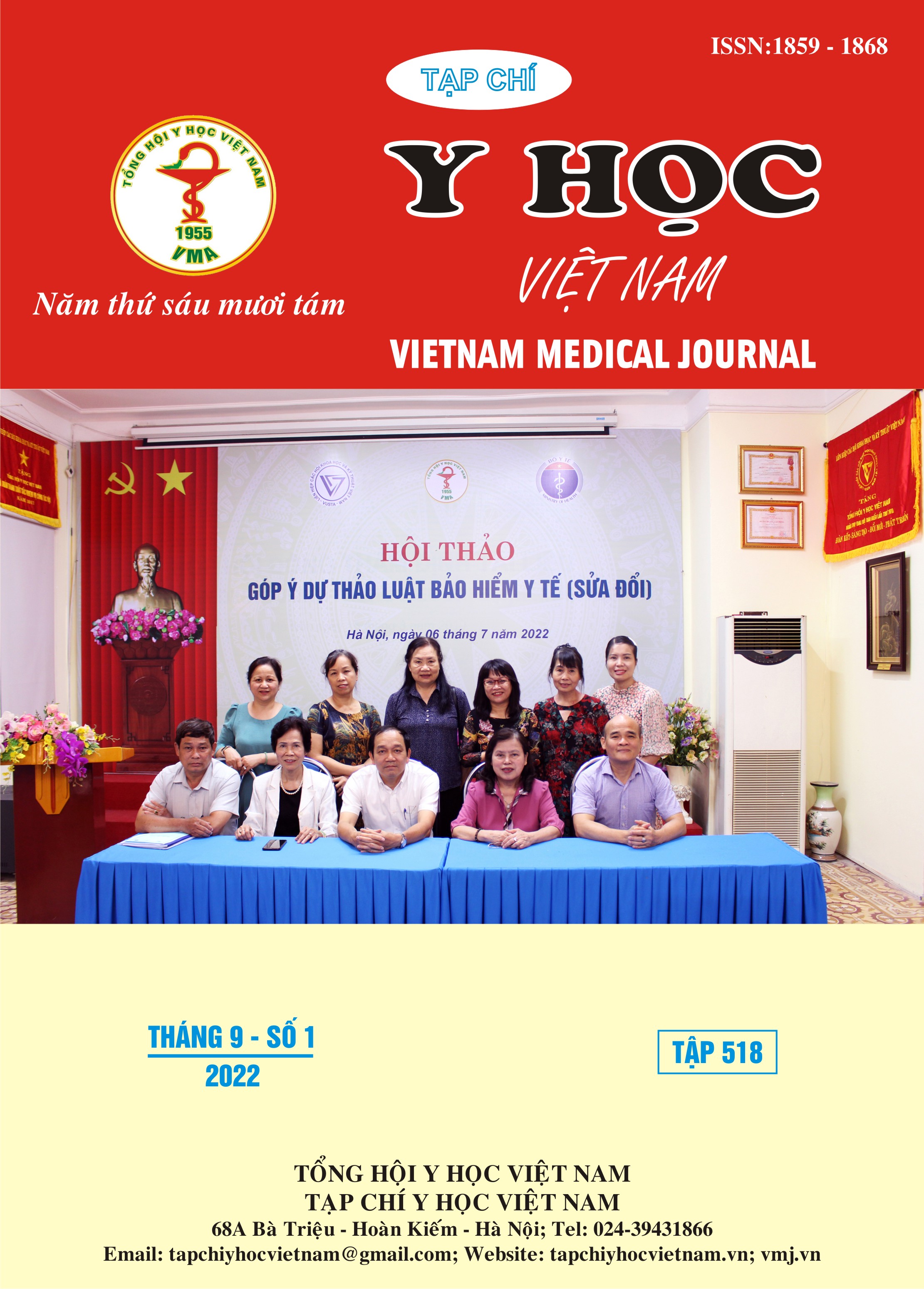RESEARCH ON THE USE OF DRUGS TO TREAT STOMACH AND DUODENAL ULCERS AT TRA VINH PROVINCIAL HOSPITAL
Main Article Content
Abstract
Objectives: patient characteristics and the use of inhibitors proton pump and drug groups to support peptic ulcer. Materials and methods: retrospective study, from January 2020 to the end of April 2020, at the Department of Internal Medicine General - Hospital of Tra Vinh. Select all medical records, survey patient characteristics by age group, sex, Ethnicity, occupation, peptic ulcer disease groups, the use of proton pump inhibitors and groups of drugs to support gastric and duodenal ulcers on each medical records. Exclude patients who stop taking medication for other reasons (example: surgery), transfer to hospital or death and abandonment of treatment or escape from hospital. Use Microsoft Excel 2013. Results: the age group from 41 to 59 years old has the highest rate of 30.53%; female (50.76%) has a higher rate than male (49.24%); the highest occupation is farmers (30.53%) and the lowest is trading (4.20%); the group of gastritis has the highest rate of 77.10% and the lowest is the group of diseases duodenal ulcer and peptic ulcer is 1.15%. The two drugs most commonly used proton inhibitors are esomeprazole and pantoprazole. 05 groups of drugs that support treatment are tranquilizers; antispasmodic, drug class antiemetic; reduce flatulence, group of vitamins and minerals, group of hemostatic drugs and the least drug group is anemia. Conclusions: has the highest rate is the age group from 41 to 59 years old, farmers, gastritis group. The two drugs most commonly used proton inhibitors are esomeprazole and pantoprazole. 05 groups of drugs that support treatment are tranquilizers; antispasmodic, drug class antiemetic; reduce flatulence, group of vitamins and minerals, group of hemostatic drugs and the least drug group is anemia.
Article Details
Keywords
stomach and duodenal ulcers, medication use, Tra Vinh
References
2. Bộ Y tế (2018), Dược thư quốc gia Việt Nam, Nhà xuất bản Y học Hà Nội.
3. Hoàng Trọng Thảng (2014), Giáo trình sau Đại học Bệnh tiêu hóa gan – mật, Nhà xuất bản Đại học Huế, tr. 105 – 147.
4. Hoàng Trọng Thảng, Phạm Phú Anh (2018), “Hiệu quả của phát đồ lai (EA – EACT) 14 ngày trong điều trị loét tá tràng có Helicobacter pylori”, Tạp chí Khoa học Tiêu Hóa Việt Nam 9(52): 3239 – 3245.
5. Lê Thành Lý, Lê Thị Bích Vân và cs (2007), “Đánh giá hiệu quả ban đầu tiêm truyền tĩnh mạch thuốc Esomeprazol trong phòng ngừa chảy máu tái phát sau nội soi điều trị xuất huyết do loét dạ dày tá tràng”, Tạp chí tiêu hóa tháng 8: 34 – 36.
6. Nguyễn Hữu Sản (2014), Khảo sát tình hình sử dụng thuốc điều trị bệnh viện loét dạ dày tá tràng tại khoa Nội 3 bệnh viện Quân khu 3, Luận văn Dược sĩ chuyên khoa cấp 1, Đại học Dược Hà Nội.
7. Nguyễn Thị Thanh Bình (2009), Đánh giá kết quả cầm máu bằng tiêm cầm máu qua nội soi kết hợp Nexium (Esomeprazol) liều cao ở bệnh nhân xuất huyết do loét dạ dày tá tràng, Luận văn thạc sỹ y học, Trường Đại học Y Hà Nội.
8. Phan Thị Đường (2013), Khảo sát tình hình sử dụng thuốc trong điều trị viêm loét dạ dày tá tràng tại khoa Nội bệnh viện Đa khoa huyện Võ Nhai tỉnh Thái Nguyên, Luận văn dược sĩ chuyên khoa cấp I, Trường Đại học Dược Hà Nội.
9. Poynard T, Lemaire M, Agostini H (1995), “Meta-analysis of randomized clinical trials comparing lansoprazole with ranitidine or famotidine in the treatment of acute duodenal ulcer”, Eur J Gastroenterol Hepatol; 7(7):661-665.


